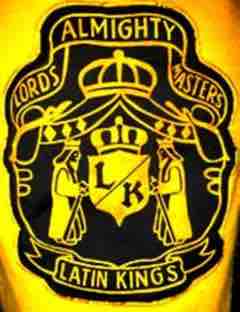Psychological theories of self development have been broadened by sociologists who explicitly study the role of society and social interaction in self development. Charles Cooley and George Mead both contributed significantly to the sociological understanding of the development of self. Lawrence Kohlberg and Carol Gilligan developed their ideas further, researching how our sense of morality develops. Gilligan added the dimension of gender differences to Kohlberg's theory.
How do we get from being newborns to being humans with "selves? " Mead believed that there is a specific path of development that all people go through. During the preparatory stage, children are only capable of imitation: they have no ability to imagine how others see things. They copy the actions of people with whom they regularly interact, such as their mothers and fathers. This is followed by the play stage, during which children begin to take on the role that one other person might have. Thus, children might try on a parent's point of view by acting out "grownup" behavior, like playing "dress up" and acting out the "mom" role, or talking on a toy telephone the way they see their father do.
During the game stage, children learn to consider several roles at the same time and how those roles interact with each other. They learn to understand interactions involving different people with a variety of purposes. For example, a child at this is likely to be aware of the different responsibilities of people in a restaurant who together make for a smooth dining experience (someone seats you, another takes your order, someone else cooks the food, while yet another clears away dirty dishes).
Finally, children develop, understand, and learn the idea of the generalized other, the common behavioral expectations of general society. By this stage of development, an individual is able to imagine how he or she is viewed by one or many others—and thus, from a sociological perspective, to have a "self" (Mead 1934; Mead 1964).
Moral development is an important part of the socialization process. The term refers to the way people learn what society considered to be "good" and "bad," which is important for a smoothly functioning society. Moral development prevents people from acting on unchecked urges, instead considering what is right for society and good for others. Lawrence Kohlberg (1927–1987) was interested in how people learn to decide what is right and what is wrong. To understand this topic, he developed a theory of moral development that includes three levels: preconventional, conventional, and postconventional.
In the preconventional stage, young children, who lack a higher level of cognitive ability, experience the world around them only through their senses. It isn't until the teen years that the conventional theory develops, when youngsters become increasingly aware of others' feelings and take those into consideration when determining what's "good" and "bad. " The final stage, called postconventional, is when people begin to think of morality in abstract terms, such as Americans believing that everyone has the right to life, liberty, and the pursuit of happiness. At this stage, people also recognize that legality and morality do not always match up evenly (Kohlberg 1981). When hundreds of thousands of Egyptians turned out in 2011 to protest government corruption, they were using postconventional morality. They understood that although their government was legal, it was not morally correct.
Another sociologist, Carol Gilligan (1936–), recognized that Kohlberg's theory might show gender bias since his research was only conducted on male subjects. Would females study subjects have responded differently? Would a female social scientist notice different patterns when analyzing the research? To answer the first question, she set out to study differences between how boys and girls developed morality. Gilligan's research demonstrated that boys and girls do, in fact, have different understandings of morality. Boys tend to have a justice perspective, placing emphasis on rules and laws. Girls, on the other hand, have a care and responsibility perspective; they consider people's reasons behind behavior that seems morally wrong.
Gilligan also recognized that Kohlberg's theory rested on the assumption that the justice perspective was the right, or better, perspective. Gilligan, in contrast, theorized that neither perspective was "better": the two norms of justice served different purposes. Ultimately, she explained that boys are socialized for a work environment where rules make operations run smoothly, while girls are socialized for a home environment where flexibility allows for harmony in caretaking and nurturing (Gilligan 1982; Gilligan 1990).

Accepting Political Legitimacy
In the 2000 election, most Americans quickly accepted the legitimacy of the Supreme Court's decision. Teaching people to accept the "rules of the game," as in this situation, is an important function of political socialization.

Latin Kings Socialization
Political socialization does not always mean people are being socialized to accept mainstream political views. The gang "The Latin Kings" (insignia shown) socializes members to violence.

Teaching Younger Generations
Political socialization involves one generation passing on political values and norms to the next generation.